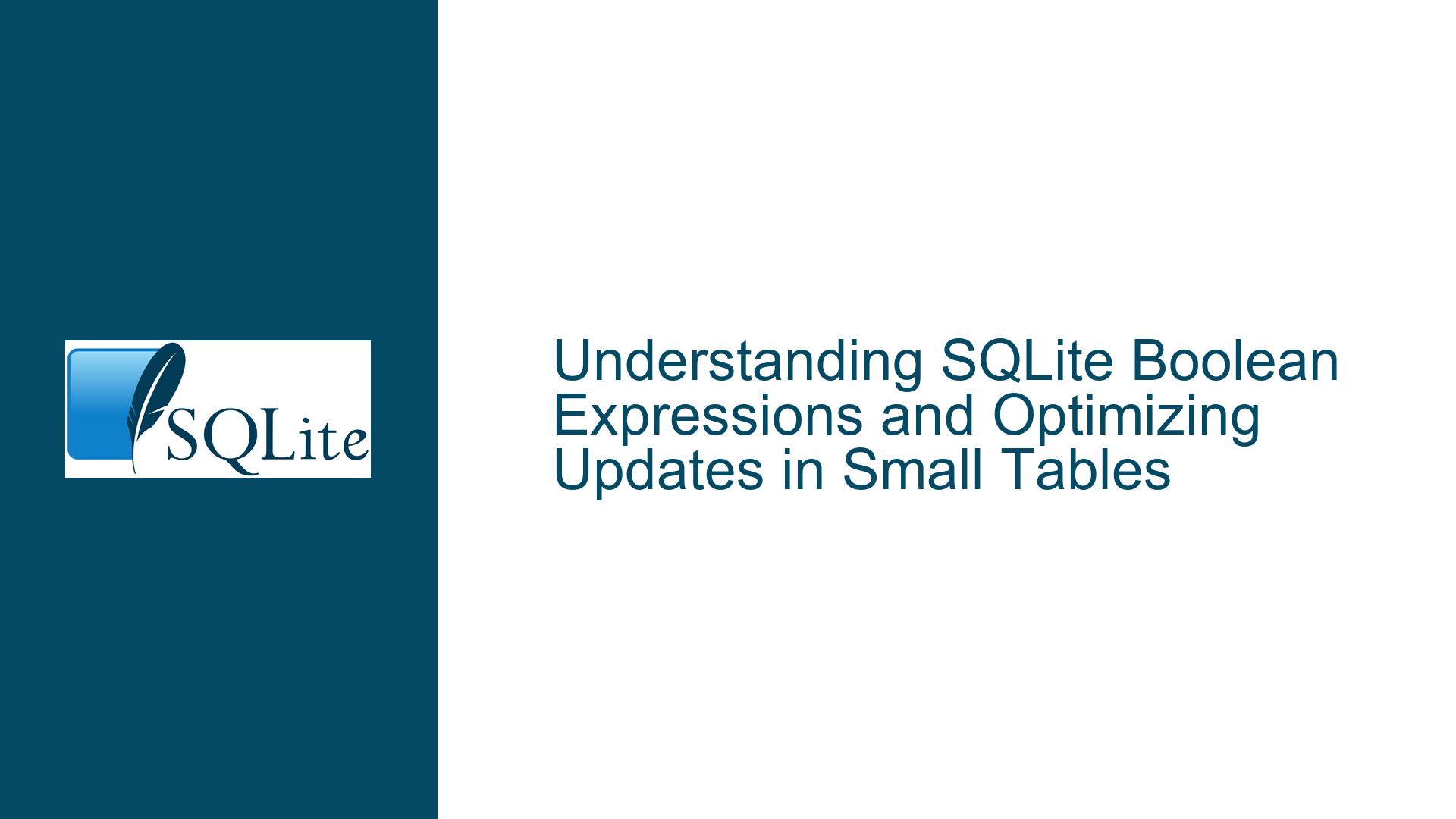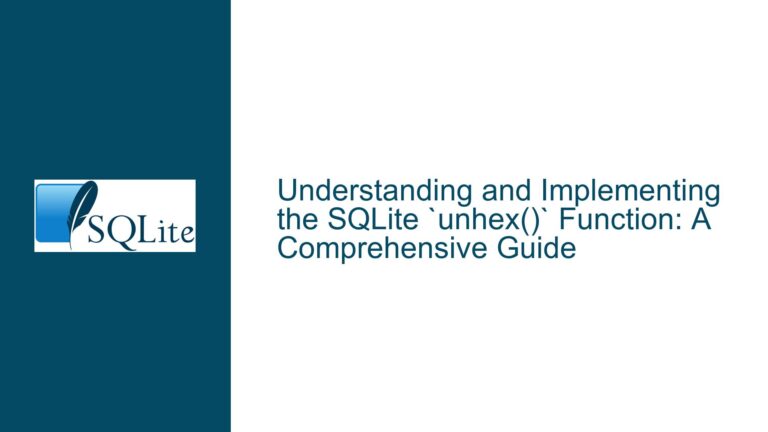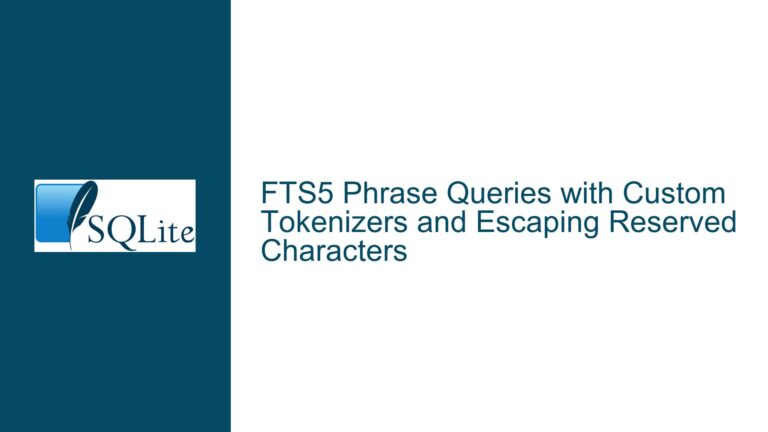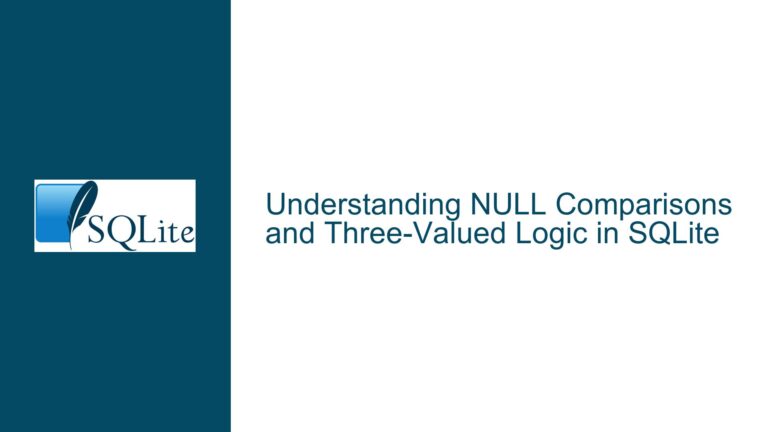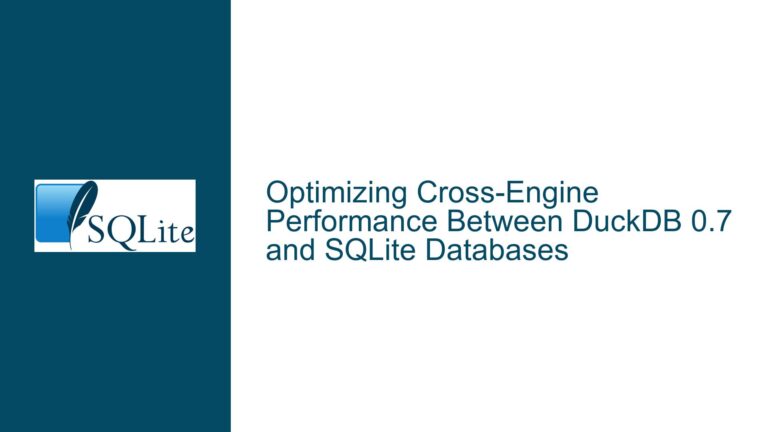SQLite Boolean Expressions and Optimizing Updates in Small Tables
SQLite Boolean Expression Evaluation in UPDATE Statements
In SQLite, the evaluation of boolean expressions within UPDATE statements can sometimes lead to confusion, especially when dealing with the results of equality checks. The core issue revolves around the behavior of the expression (pl_id=?) in the context of an UPDATE statement. Specifically, the question is whether the result of this expression will always be 0 or 1, or if it could potentially yield other values such as 99.
The expression (pl_id=?) is a boolean expression that evaluates to TRUE or FALSE. In SQLite, TRUE is represented by 1 and FALSE by 0. This behavior is consistent with the way SQLite handles boolean expressions in general. However, the concern arises from the possibility that the result might not always be 0 or 1, but could instead be some other non-zero value like 99. This concern is rooted in the fact that SQLite does not have a dedicated boolean data type, and boolean expressions are treated as integers.
The SQLite documentation confirms that the result of a boolean expression will always be 0 or 1. This is because SQLite’s expression evaluation is designed to return 0 for FALSE and 1 for TRUE. This behavior is not implementation-dependent but is instead a consistent feature of SQLite’s expression evaluation engine. Therefore, when you use an expression like (pl_id=?) in an UPDATE statement, you can be confident that the result will always be 0 or 1.
However, it is important to note that while the result of the expression will always be 0 or 1, the actual value stored in the checkbox column could be any integer if you explicitly set it to a different value. For example, if you were to execute UPDATE pltable SET checkbox = 99 WHERE pl_id = ?;, the checkbox column would indeed contain the value 99. But in the context of the expression (pl_id=?), the result will always be 0 or 1.
Impact of Indexing on UPDATE Operations in Small Tables
The second part of the issue revolves around whether an index should be defined for the pl_id column in the pltable table, and if so, what kind of index would be most appropriate. The pl_id column is a primary key, which means it is already unique and indexed by default. However, the question is whether additional indexing could improve the performance of the UPDATE operation.
In general, indexes are used to speed up query performance by allowing the database to quickly locate the rows that match a given condition. However, in the case of an UPDATE statement that modifies every row in the table, indexes do not provide any performance benefit. This is because the database must still scan every row to determine whether it matches the condition and then update it accordingly. In fact, having additional indexes could actually slow down the UPDATE operation because the database would need to update the index as well as the table data.
In the case of the pltable table, which is described as being very small (containing only a handful of rows), the impact of indexing on the UPDATE operation is negligible. The table is so small that the database can scan all rows and update them in a fraction of a second, regardless of whether an index is present. Therefore, creating an additional index on the pl_id column would not provide any meaningful performance improvement and could even introduce unnecessary overhead.
However, if the table were larger, and the UPDATE operation were more selective (i.e., it only updated a small subset of rows), then indexing could be beneficial. For example, if the UPDATE statement only modified rows where checkbox = 1, then an index on the checkbox column could help the database quickly locate the relevant rows. But in the case of the pltable table, which is small and has a primary key on pl_id, additional indexing is not necessary.
Optimizing I/O Operations for Small Table Updates
The final aspect of the issue concerns the sequence of I/O operations that occur during the UPDATE statement and whether there is any way to minimize the number of I/O operations. In SQLite, every UPDATE operation results in at least one write to the database file, and if the table is small enough to fit within a single page, then the entire table will be written to disk during the update.
The pltable table is described as being small enough to fit within a single page, which means that every UPDATE operation will result in a single page write. This is the minimum amount of I/O that can occur for an UPDATE operation in SQLite. Therefore, there is no way to further reduce the number of I/O operations for this particular table.
However, it is worth noting that SQLite uses a write-ahead log (WAL) to ensure data integrity and durability. When the WAL is enabled, changes are first written to a separate log file before being applied to the main database file. This allows for faster commits and reduces the likelihood of data corruption in the event of a power failure. However, the WAL does not reduce the number of I/O operations; it simply changes the order in which they occur.
In the case of the pltable table, the WAL would not provide any significant performance benefit because the table is so small that the entire update can be completed in a single I/O operation. However, enabling the WAL could still be beneficial for overall database performance, especially if there are other tables or operations that could benefit from the reduced contention and faster commits that the WAL provides.
To summarize, the UPDATE operation on the pltable table will always result in a single page write, and there is no way to reduce the number of I/O operations further. However, enabling the WAL could improve overall database performance, even if it does not directly impact the performance of the UPDATE operation on the pltable table.
Conclusion
In conclusion, the behavior of boolean expressions in SQLite is well-defined and consistent. The expression (pl_id=?) will always evaluate to 0 or 1, and this behavior is not implementation-dependent. Therefore, you can rely on this behavior in your UPDATE statements without concern for unexpected results.
Regarding indexing, the pl_id column is already indexed as a primary key, and additional indexing is not necessary for the UPDATE operation on the pltable table. The table is small enough that the database can scan and update all rows quickly, and additional indexes would only introduce unnecessary overhead.
Finally, the I/O operations for the UPDATE statement on the pltable table are already minimized, as the entire table fits within a single page. Enabling the WAL could improve overall database performance, but it will not reduce the number of I/O operations for this specific UPDATE operation.
By understanding these nuances, you can confidently write efficient and reliable SQLite queries, even when dealing with boolean expressions and small tables.
